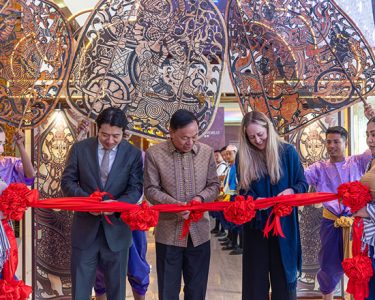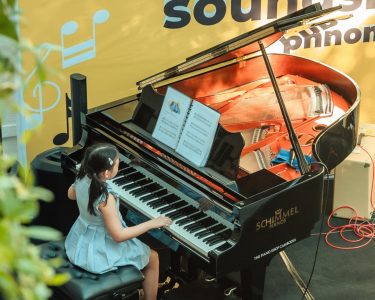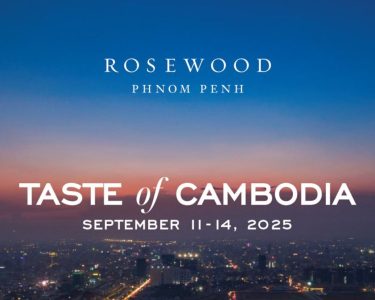CIR Lifestyle
The National Bank of Cambodia’s Preah Srey Içanavarman Museum of Economy and Money, better known as the SOSORO Museum, has unveiled a major new temporary exhibition titled Into the Light: The Retrieved Paintings of Phnom Penh’s Silver Pagoda. The exhibition, inaugurated on October 4, 2025, was presided over by Her Excellency Dr. Chea Serey, Governor of the National Bank of Cambodia, and attended by members of the royal family, senior officials, diplomats, and cultural leaders.
Rediscovering a Lost Masterpiece
The exhibition, curated under the scientific direction of Professor Olivier de Bernon of the École française d’Extrême-Orient (EFEO), brings to life a remarkable rediscovery in Cambodia’s artistic heritage. For decades, the Silver Pagoda’s early 20th-century murals—believed to have vanished following restoration work in the 1960s and subsequent decades of turmoil—were thought lost forever.
However, a recent study of fragile glass-plate negatives, preserved by Her Royal Highness Princess Norodom Marie, has revealed vivid photographic records of these paintings. The rediscovery provides scholars and the public alike a rare opportunity to reconnect with the spiritual and artistic expression of the Khmer Buddhist tradition.

Through these images, the exhibition sheds new light on the interplay between religion, art, and history in Cambodia’s royal heritage. SOSORO officials noted that the project underscores the importance of interdisciplinary collaboration between cultural institutions, historians, and the royal household in preserving national memory.
A Journey Through Faith, History, and Restoration
Into the Light takes visitors on a chronological journey through the history of the Silver Pagoda—from the origins of its murals to their mysterious disappearance and eventual rediscovery. It delves into the paintings’ inspiration in Buddhist scriptures and Khmer traditions, while exploring the role of photography in safeguarding cultural memory.
Visitors can view high-resolution reproductions of jātaka scenes—depicting stories from the Buddha’s past lives—alongside historical accounts, artefacts, and rare manuscripts that contextualize their religious and artistic significance. An interactive feature allows visitors to project and explore digital copies of the glass-plate negatives, providing a hands-on way to experience the fine details and craftsmanship of the original works.

To engage younger audiences, a specially designed youth booklet accompanies the exhibition, introducing students to Cambodia’s cultural heritage through accessible storytelling and visual exploration.
Culture, Economy, and Public Engagement
The exhibition highlights SOSORO Museum’s growing role not only as an educational hub on Cambodia’s economic and monetary history but also as a bridge to broader cultural dialogue. Established by the National Bank of Cambodia, SOSORO has welcomed more than 150,000 visitors since its opening, with half being students or children.
In addition to its permanent exhibits, the museum regularly hosts temporary exhibitions, conferences, and cultural events, integrating modern technologies and interactive displays into its state-of-the-art facilities. Its efforts to combine economic literacy with cultural appreciation were recognized with the Tripadvisor Travelers’ Choice Award, underscoring its status as one of Phnom Penh’s leading cultural destinations.

The Into the Light exhibition will run for five months and is open to the public free of charge, from Tuesday to Sunday between 9:00 AM and 6:00 PM at the SOSORO Museum on Street 102, Phnom Penh.





